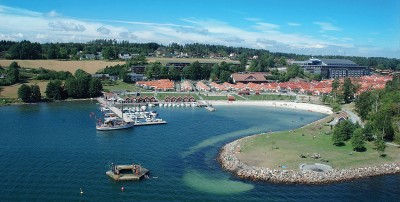Norwegian archaeologists working on a dig in Stokke, southwest of Oslo, have unearthed what they believe is the brain mass from a person living in the Stone Age. They told Norwegian Broadcasting (NRK) on Thursday that it’s likely among the most important discoveries in Norway ever.

“It’s not easy to see, you need to have some training and have an open mind,” excavation leader Gaute Reitan told NRK. “But we saw something brown (external link to NRK), with a bit darker surface. That’s bone.”
Or skull, as the case may be. Reitan and his team of 10 archaeologists tied to the University of Oslo have been digging for the past two months in a fjordside area of Vestfold County where the religious organization Smiths Venner is planning to develop another large meeting hall at its Oslofjord Convention Center. The archaeologists have already made several discoveries at what they believe is the site of two camps from the Stone Age, called Brunstad, where people lived around 8,000 years ago.

“It’s seldom enough that we get to dig in a camp from a portion of the Stone Age that we really don’t know much about,” Reitan said. “But the fact that we’re uncovering a whole lot of things that are exceptional on a national basis, makes this very special.” Among their findings are Norway’s oldest unburned bone and other biological material that, if analysis dates it back to the Stone Age as expected, can be “the sort of thing archaeologists experience only once in their careers.”
And then there was the skull remnant, which his team believes still contains brain mass. “Inside it is something rather grey and clay-like,” Reitan told NRK. “You can just think for yourself what that may be.”
Analysis will determine whether other bone fragments found are from people or animals. One was “quite large,” Reitan said, “maybe a shoulder- or hip bone.” He said the archaeologists “now need help from the experts” who will analyze and date the material, but he said they’re “quite sure” already that it dates from the Stone Age.
If confirmed, “it can help us learn more about what it was like to live in the Stone Age in Norway.” Some of the bones already found were sent for analysis and dated to around 5,900BC.
Reitan said his team was so excited about the results of the excavation that they don’t want to pack up and go home. “It’s possible we’ll work a bit longer,” Reitan laughed. But he’s fully aware of the development plans for the area and he promised the excavation wouldn’t exceed their allotted time. “We’ll be finished here in a few weeks, and they they’ll start digging and building their hall,” Reitan said.
newsinenglish.no/Nina Berglund

